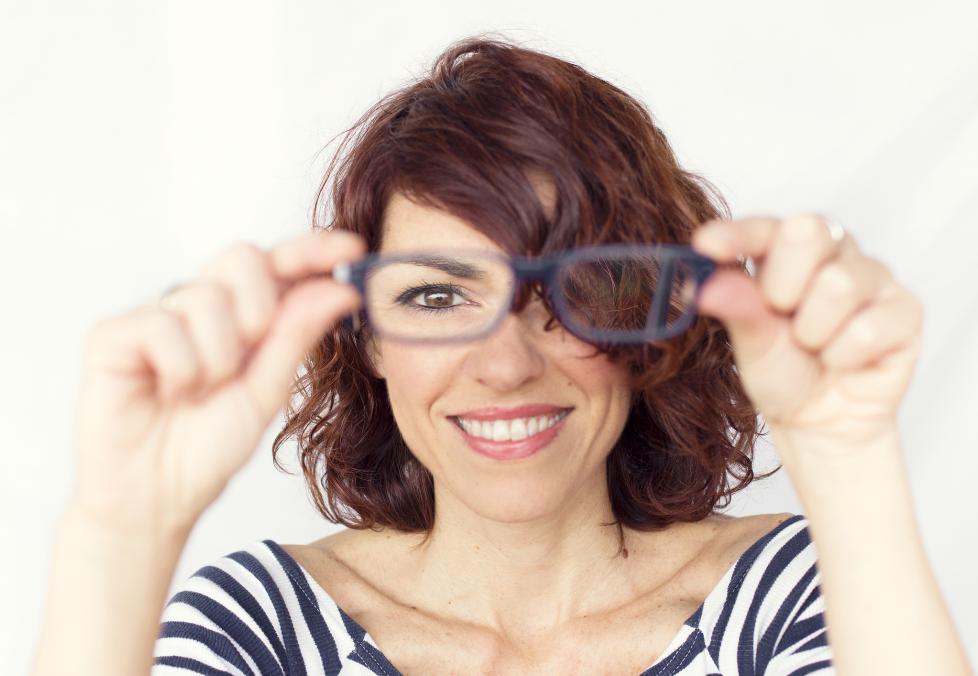
Now’s the perfect time to book an eye exam, shop for new glasses, or stock up on contact lenses.
Everything you need to know to take care of your eyes — for life.
Time to clear up the common misconceptions about 20/20 vision, the gold standard of good eyesight.

The eye chart is universally recognized, but what all those big E’s and little e’s really tell us about our eyesight is oh so misunderstood. It’s time to set things straight.
In fact, there’s no such thing as perfect vision. But there is a “normal” standard for distance vision, and that’s what 20/20 stands for—the norm.
Having 20/20 vision indicates you can clearly read a certain line and certain letters on an eye chart from 20 feet away. This standard has been in place since the 1860s, when eye-care pros determined that the eye’s focusing muscle is in its “ideal” relaxed state when looking at objects from this distance. Move closer or farther, and your eye starts to adjust to keep things clear.
Let’s say you have 20/40 vision. You can legally drive a car without corrective lenses but can only see clearly at 20 feet what your friend with 20/20 vision can focus on from 40 feet away. Now imagine you have 20/15 vision. You guessed it—you have sharper eyesight than most. So, what’s clear to you at 20 feet only becomes clear to your 20/20 pal when they step forward five feet.
When your eye doctor prescribes eyeglasses or contacts, the goal is to get you as close to 20/20 as possible.
Eye exams are an essential part of your health care routine. Book an appointment with your America’s Best optometrist today! Click here to find a time that fits your schedule.
When you have 20/20 vision, you can make out the small details of an object (the official term for this is visual acuity), but it doesn’t account for all of the other things that help you see well—depth perception, side vision, how well you see colors and movement, and how well your eyes work together, says Stephanie Hubbard, O.D., an optometrist with Crystal Clear Eye Associates, located inside an America’s Best Contacts & Eyeglasses in Sarasota, Florida. If you have any of those issues, you may still benefit from corrective lenses.
Having 20/20 vision also doesn’t give you a pass on regular eye exams. “Eye health problems don’t always have outward signs or symptoms,” says Dr. Hubbard, “so it’s always a good idea to make an appointment with your eye doctor every year or two.”
Recommended reading: 6 Things Your Eyes Reveal About Your Overall Health
If you brag about your 20/20 vision but haven’t had your eyes checked in a few years, the joke may be on you. Our vision changes, often like clockwork, as we age.
Many kids enjoy 20/20 vision until they turn 8 or 9. It’s also common for kids’ visual acuity to change continuously as their bodies grow, and then stabilize again when they hit their late teens. (Recent research shows spending more time outside in the sunshine—about two hours a day—may help prevent nearsightedness in kids.)
Once you hit your 40s and 50s, you may still register 20/20 but find that you need readers or other corrective lenses to help you with up-close work. And it’s common for people who hang onto their 20/20 vision until retirement to lose those bragging rights once they reach their 60s or 70s.
Recommended reading: Can You Pass This Eye Health Quiz?

Now’s the perfect time to book an eye exam, shop for new glasses, or stock up on contact lenses.